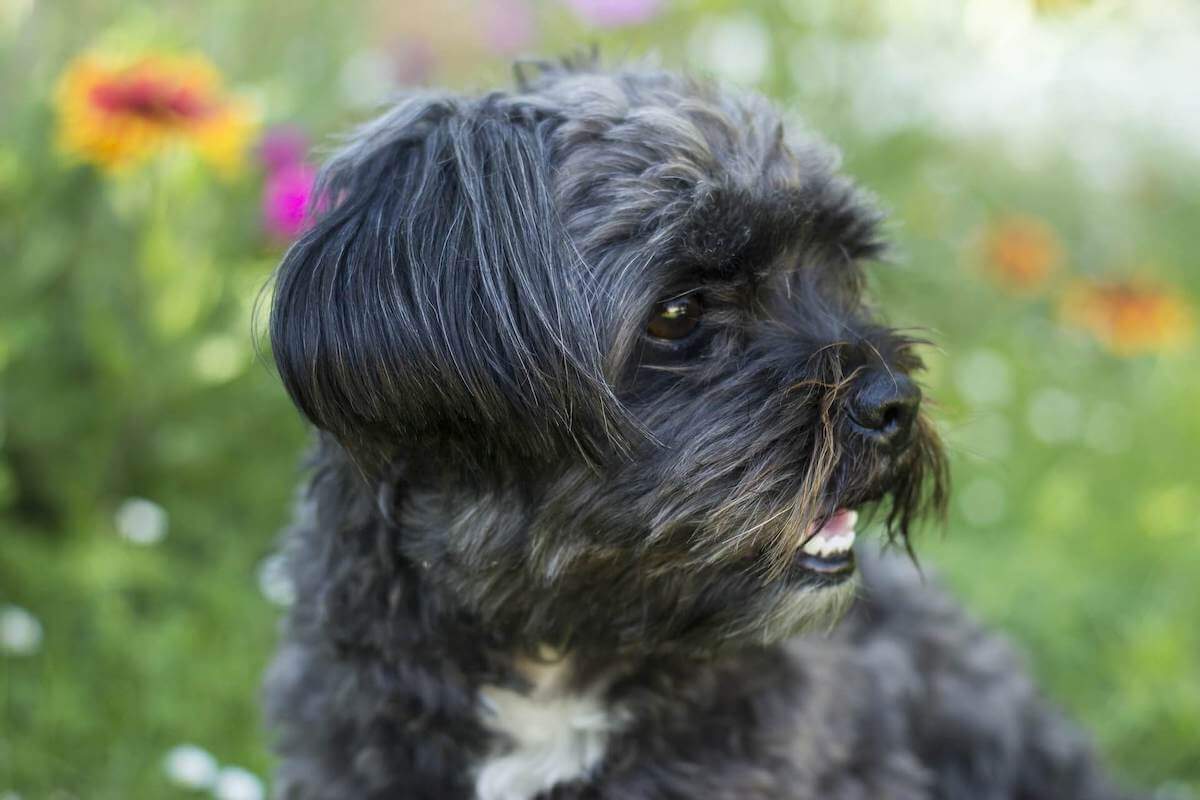The Shih Tzu is a very colorful dog meaning that it can come in a wide variety of colors and patterns. In fact, no two really look the same.
Additionally, there is no breed standard according to the American Kennel Club in regards to color, pattern, or markings for Shih Tzus.
Any Shih Tzu colors or markings, or patterns are considered permissible, and none of them are more favorable than the other.
Here we will take a look at some of the most common colors and patterns that exist within the Shih Tzu breed.

Shih Tzu Colors Explained
There are typically anywhere from one to three colors on a Shih Tzu’s coat. The patterns describe how the colors are laid out on the dog’s body.
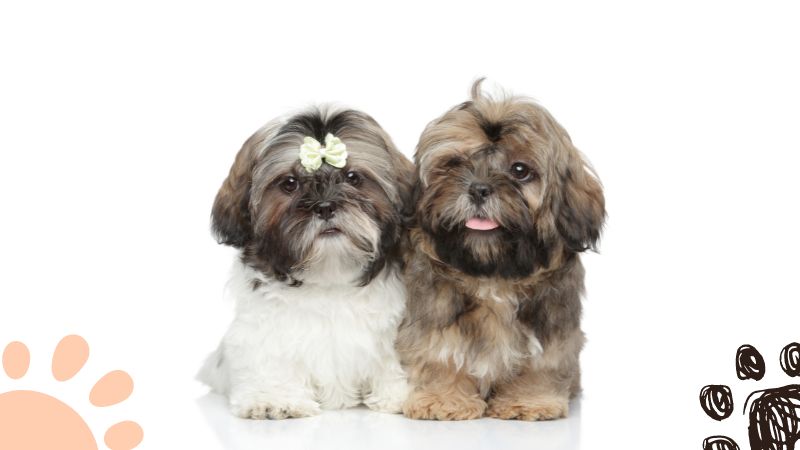
Typically, connoisseurs of the breed consider the different colors in percentages. For example, a black, white, and silver Shih Tzu may be 25% black, 25% white, and 50% silver.
Markings, on the other hand, are tiny patches of color that are not considered to be a part of the overall color of the dog.
The most common markings seen with Shih Tzus are black markings, tan markings, or black masks. While single color Shih Tzus do exist, they are much more rare than Shih Tzus with two or three colors.
Shih Tzu Colors and Patterns

Black
Black is not a common color for Shih Tzus, and most of those that appear completely black may have shades of blue or chocolate in their coats. White markings are often present in black Shih Tzus, although pure black pups do exist.
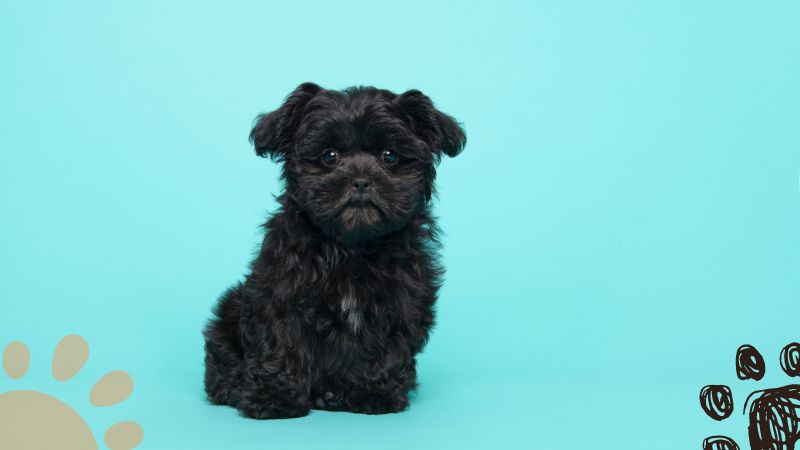
If a black Shih Tzu has visible golden hairs on its face, paws, or tail, it is considered a black and tan dog, rather than a black dog with tan markings.
In Shih Tzus, the dominant black gene interacts with other genes to produce a range of colors. A black Shih Tzu will have black paws, nose, and dark-colored eyes. Although its coat may fade to a more silver color as it matures, its black points will remain pure.
Liver
Another color Shih Tzus can have is liver, one of the most expensive colors. Interestingly, the term liver is used more so to describe the dog’s skin points than its fur, but they often coincide.
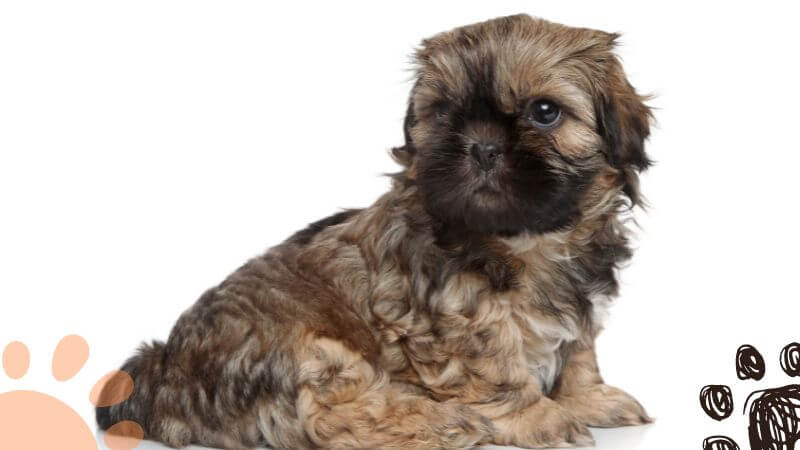
The most notable areas of the dog’s skin that will be liver in color are the nose, around the eyes, the lips, and the paw pads.
Usually, these pups have colors ranging from cream to various shades of browns, golds, and even dark chocolate browns. Additionally, liver Shih Tzus cannot have any black fur whatsoever.
This is because the liver allele affects the black gene, thus turning all areas that might otherwise be black into liver.
Brindle
Another commonly seen color on Shih Tzus is brindle. However, this is a bit of a misnomer, considering brindle actually refers to a pattern of stripes that can be of various colors!
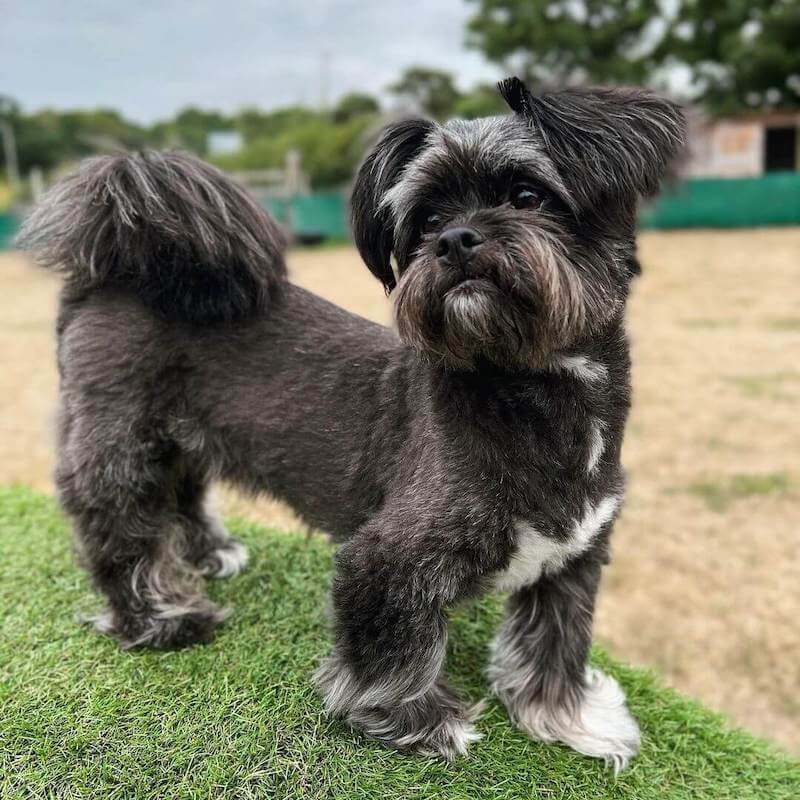
Usually, brindle Shih Tzus have coats that consist of white, cream, gold, brown, gray, and black colors.
The stripes can vary greatly, too. For example, brindle stripes can be spaced really close together, sometimes referred to as tight brindling.
But, on the other hand, they can also be spaced rather far apart from each other, which is sometimes referred to as loose brindling.
Some brindle Shih Tzus also carry the gene that causes graying, so it is common that brindle Shih Tzus may fade to more of a gray color as they age.
Blue
Similarly to liver Shih Tzus, blue is another color that is seen primarily in the skin points of Shih Tzus. In essence, blue is simply a dilution of the color black.
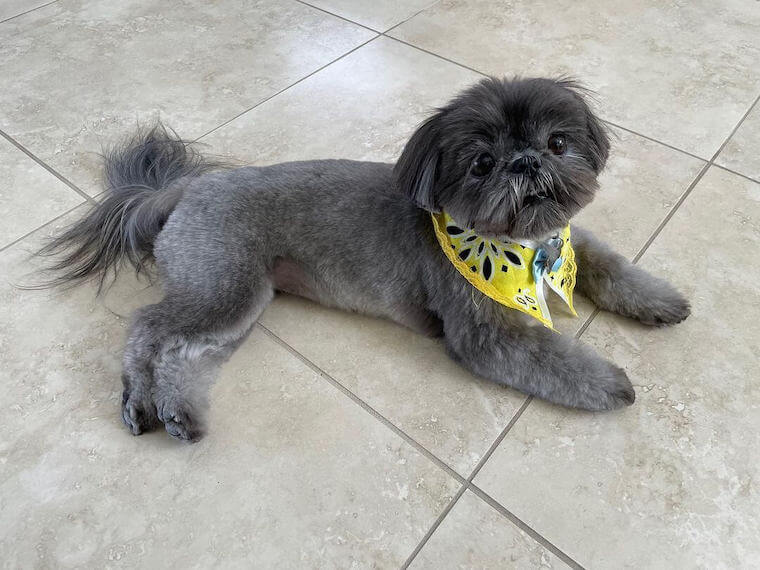
It occurs when the D-locus allele, otherwise known as the dilution gene, affects the allele controlling black coloring. You typically will not be able to see any black fur in their coats since the D-locus allele will have diluted it.
It can be rather difficult to notice the blue hue on these dogs, especially because as they grow older and mature, other colors tend to overtake the blue. However, in bright sunlight, it is usually much easier to see the blue hue.
White
While rare, it is possible for a Shih Tzu to have an entirely white coat. Because there are so many possible colors, patterns, and markings, it is highly likely that other colors from past generations will be passed down.
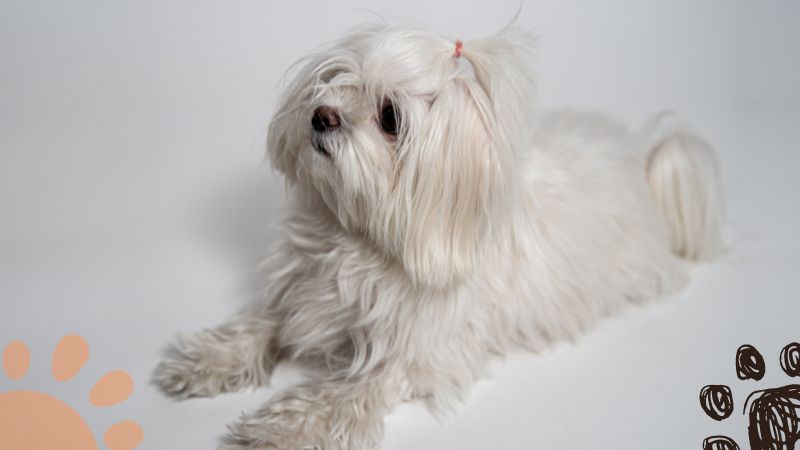
For example, even if both the father and the mother Shih Tzu, were entirely white, the puppies would still likely have inherited the colors of their grandparents.
Instead, it is far more common to see a white Shih Tzu with tan, brown, or gray markings. Additionally, lots of various patterns and combinations exist, with white being one of the primary colors.
Some examples include silver and white, red and white, brindle and white, and so on.
Gold
Gold is another rare or not commonly seen color on Shih Tzus. It is extremely rare to see an adult Shih Tzu who is entirely gold in color.
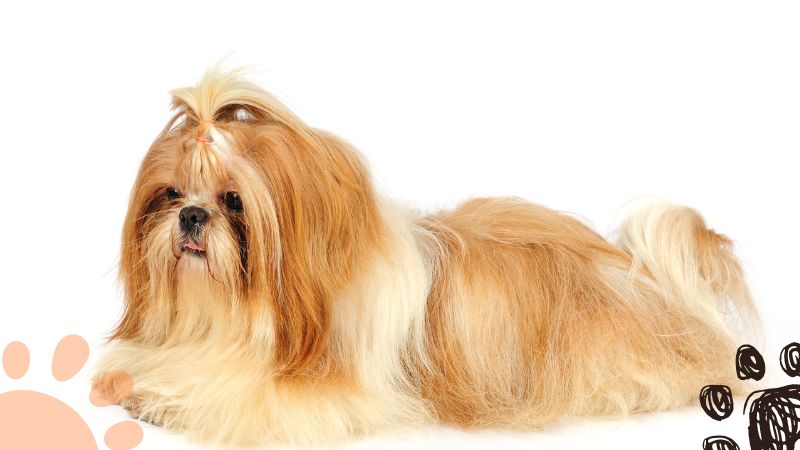
However, double-color and triple-color Shih Tzus will sometimes have gold as one of the colors in their pattern of colors.
A Shih Tzu with gold coloring will often look quite vivid in its color as a puppy, but as the dog matures, the gold often fades to more of a pale yellow color.
As mentioned earlier, some Shih Tzus can have various markings. One marking that is often seen with Shih Tzus that have gold coloring is a black mask or black markings on the tips of their ears.
Red
Some Shih Tzus can be red in color, though they are not very common, especially in terms of AKC registration.

For example, a Shih Tzu that is entirely red like an Irish Setter but has a brown or liver-colored nose would actually be registered as a liver Shih Tzu and not a red.
It would be much more likely that a Shih Tzu with a black nose and skin points would be considered a red Shih Tzu.
Shih Tzus can have quite a wide variety of shades of red as well, often looking almost orange, rust, or deep auburn in color.
Silver
It is not at all common to see an entirely silver Shih Tzu. However, there are quite a few with silver and white or black, gold, and silver that make up their coat colors.
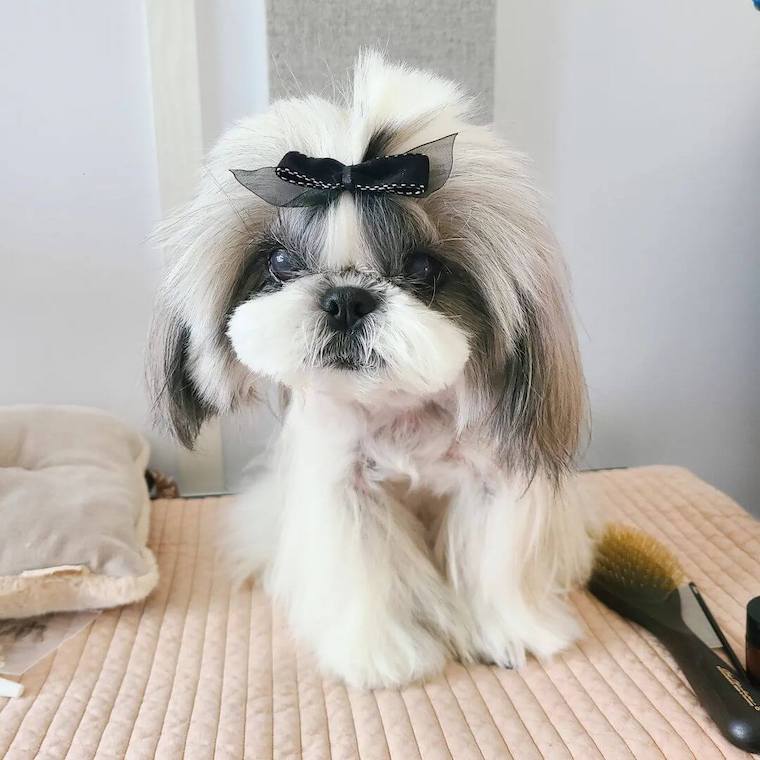
Silver can sometimes be confused for gray but will often have a bit of a shine to it that distinguishes it from gray colors.
Black and White
Black and white is undoubtedly one of the most common combinations of colors on a Shih Tzu. Interestingly, black and white Shih Tzus are not considered to be two-colored dogs.
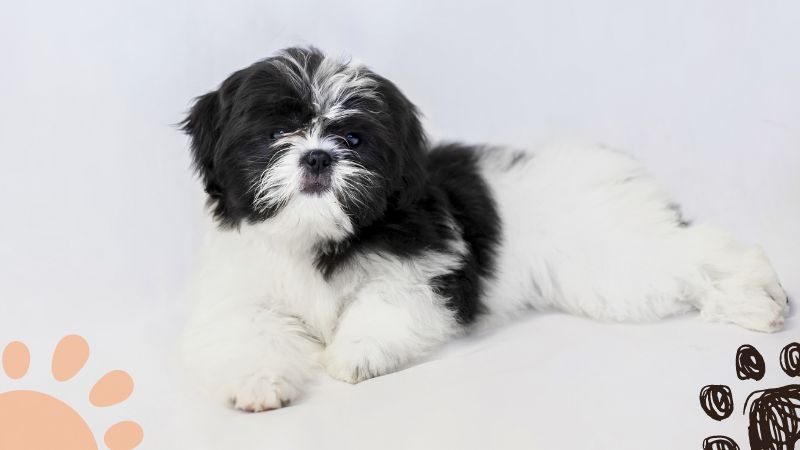
Instead, they are considered to be black dogs with white markings. This rule of thumb still holds true whether the dog is 30% black and 70% white or 50% black and 50% white.
The gene responsible for the white markings is known as the S locus or the spotting gene. The S locus can result in various spots or markings of white or more widely spread patterns of white.
Additionally, Shih Tzus’ colors can change as they grow up. So if a puppy is born with a small fleck of white on its black chest, it is possible that the puppy will mature into a dog with an entirely white chest.
Double Color
Double-colored Shih Tzus can be a wide variety of two primary hues. In most cases, though, double-colored Shih Tzus will usually have white as one of their colors.

Some of the most common combinations seen in double-colored Shih Tzus are gold and white, red and white, liver and white, and silver and white.
Triple Color
Similarly, triple-color Shih Tzus can come in a wide variety of three primary hues.
Much like the double-colored Shih Tzus, triple-colored Shih Tzus will likely have white as one of their primary colors, but there are cases where white is not present.

A few examples of triple color combinations include silver, gold, and white, along with black, gold, and white.
Another combination is black, white, and silver. And as mentioned earlier, a combination without white exists in the combination of black, gold, and silver.

Most Rare Shih Tzu Colors
While we already mentioned the rarity of the white Shih Tzu, one of the most rare Shih Tzus of all is the all-black Shih Tzu.
While some do exist, it is far more likely that a black Shih Tzu will have some sort of white patch on its coat. This could be on its face or even on its belly.
In fact, a Shih Tzu that is entirely one color is quite rare, no matter what the color is. These dogs usually have some sort of combination of colors or at least a marking or two of another color that disqualifies them from being considered to be a solid-colored Shih Tzu.
Another rare color for Shih Tzus is the lavender or Isabella color. Most people associate this color with the Weimaraner breed, but some other breeds do carry it.
Where the blue Shih Tzus genes dilute any black pigment, the lavender or Isabella Shih Tzu’s genes dilute any brown pigments.
This often gives their coat a lilac or lavender hue and can even result in amber or hazel eyes instead of brown.
Shih Tzu Colors Recognized by AKC?
The American Kennel Club released a detailed list of colors they associate with Shih Tzu dogs.
| Description | Standard Color |
|---|---|
| Black | Yes |
| Black & White | Yes |
| Black White & Silver | |
| Blue | Yes |
| Blue & White | Yes |
| Brindle | Yes |
| Brindle & White | Yes |
| Gold | Yes |
| Gold & White | Yes |
| Liver | Yes |
| Liver & White | Yes |
| Red | Yes |
| Red & White | Yes |
| Silver | Yes |
| Silver & White | Yes |
| Silver Gold & White | |
| White | |
| Black Gold & Silver | |
| Black Gold & White |
Do Shih Tzus Change Color?
Shih Tzus are born with a soft fluff coat, which they typically shed between six and twelve months of age as their mature coat develops.
During this transition, their coat color may also change, either darkening or lightening, based on their genetic makeup.
The change in color can make it difficult to correctly identify a Shih Tzu’s true color at birth, resulting in incorrect registration.
Make sure to only bathe your Shih Tzu with a specific shampoo formulated for Shih Tzus, as the wrong shampoo can lighten or fade their coat.
FAQs About Shih Tzu Colors
The Shih Tzu was originated from Tibet more than 1,000 years ago.
The American Kennel Club (AKC) recognizes 19 different colors and color combinations for Shih Tzus, including black, blue, brindle, gold, liver, red, silver, and white. AKC also recognizes different patterns such as solid, parti-color, and brindle.
The most rare Shih Tzu color is an all-black Shih Tzu.
It is normal for Shih Tzus’ black coat to turn grey as they age, which can be due to a decrease in melanin production, genetics, or health issues.
Your Shih Tzu’s fur may turn red due to allergies, their diet, or the water they drink.

Wrap-Up: Shih Tzu Colors
The breed standard for Shih Tzu allows for any colors, patterns, markings, or combinations of colors.
Some colors and patterns are more common than others, but every Shih Tzu is entirely unique! But no matter the colors or patterns of their coats, the Shih Tzu remains a playful and affectionate breed of dog that is adored all over the world.
